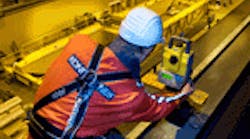Many machine shop owners and warehouse floor managers think an annual visual inspection suffices to identify any large-scale issues with their overhead lifting equipment, but the gear case, load block, and hoist coupling are just as likely as external factors to cause catastrophic failure in certain cranes. Internal inspections can unveil unforeseen weaknesses and issues with an otherwise functional crane.
“Every crane is different,” says Mike Brown, technical advisor at Konecranes. “For older or more rigorously used cranes, a comprehensive internal inspection can prove crucial in maintaining the safety of the workplace.”
This was certainly true for the equipment used at Toyota-Lift of Minnesota (TLM), a fast-growing forklift dealership.
“Even in a small shop with 24 technicians, the consequences of something going wrong with a machine that’s lifting that much weight are severe,” said Kyle Thill, director of service at Toyota. “Safety is wildly important to us.”
TLM uses one five-ton bridge crane, which has been in service for nearly 15 years. “It's a workhorse for us,” explained Thill, “and with the weight it carries, we certainly want to be sure that it is up to the task.”
TLM’s original crane service provider, which had conducted annual inspections for 14 years, concentrated on visual observations and measurements during their visits. They made occasional light changes, such as replacing a hook or cable, but they never opened up the gear case.
In the fall of 2011, TLM could not get a hold of their crane service provider. After several attempts failed, Thill found a service provider (Konecranes) thatmaintains cranes worldwide.
After an initial crane inspection, based on the equipment’s use, environment, and age of the hoist, the technicians advised TLM to perform internal inspections on the gear case, load block, and hoist coupling.
“The inside of that crane had not been looked at for 15 years,” said Thill.
The lesson from this experience is that it’s important to inspect within the gear case because gears can begin to develop faults that are not evident in an external inspection. These faults, caused by “cumulative fatigue,” can be cracks in the gears themselves, pitting corrosion on the surface of the gear, or spalling of the gear. Gear fatigue is particularly common on:
∙ Older cranes that have not been regularly serviced;
∙ Cranes that are being used beyond their expected life-cycles; or
∙ Cranes that have seen a significant increase in operating duty cycles.
If left unfixed, these faults can cause unexpected system failure, which is particularly dangerous if it happens while the crane is lifting a several-ton load. However, it is possible to detect gear fatigue well before a system failure, as long as the gear case is fully inspected on a regular basis.
The internal inspection at TLM revealed that the needle bearing in the gear case had started to fail. Without this inspection, the tear could have led to a sudden and catastrophic failure.





